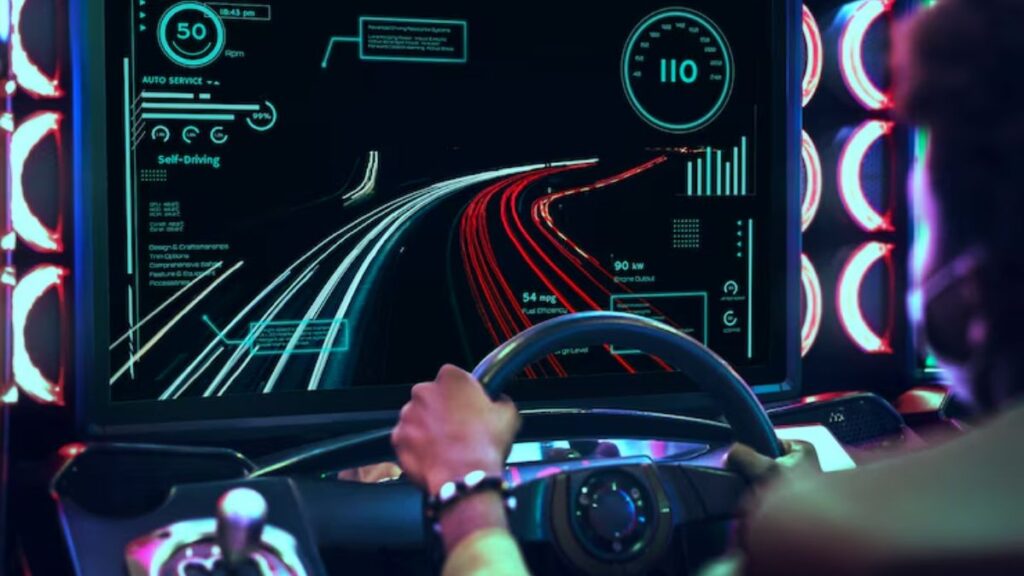Key Takeaways
- Driving simulators play a crucial role in the way new drivers learn, offering hands-on, risk-free environments for mastering skills.
- Realistic simulations now feature immersive scenarios that prepare drivers for rare, dangerous, or complex situations often missed in standard driver education.
- Academic research and real-world results indicate that simulator-based instruction reduces crash risk and improves response times.
- Continuous advancements in digital technology are making data-driven simulation solutions more widely accessible than ever.
- The adoption of simulators is expanding as organizations place a growing emphasis on safety and measurable outcomes in both private and commercial driver training.
Simulators Redefining Driver Education
The world of driver education is transforming as technology introduces new methods for teaching and learning. For decades, instruction relied on a mix of written manuals, classroom presentations, and brief sessions in a passenger car. These methods, while effective in building foundational knowledge, often fall short of preparing drivers for the unpredictable and sometimes hazardous realities they will experience on the road. Enter innovative solutions like driving simulator training, which now equips learners with the opportunity to rehearse for emergencies, bad weather, and heavy traffic without ever putting themselves—or others—at risk.
With a simulator, students encounter scenarios ranging from hydroplaning in sudden storms to dealing with aggressive drivers at night. Instructors can analyze performance data, tailor feedback, and reintroduce challenges in a way that fosters steady skill improvement. The simulated environment makes it easier to address anxiety and hesitation before they ever escalate in real traffic, giving both inexperienced teens and cautious adults a solid foundation that lasts a lifetime.
Technology Behind Modern Driving Simulators
Today’s simulators merge advanced engineering with powerful software to recreate sensory details drivers encounter on the road. High-resolution, wrap-around screens immerse the student in a virtual world, while haptic feedback through pedals and steering wheels simulates changing road surfaces and tire grip. The experience is so vivid that users report real adrenaline spikes and genuine surprise at unexpected virtual events—precisely the kind of authentic emotional and cognitive engagement that accelerates learning. As outlined in ScienceDirect’s overview of driving simulation, these technologies are grounded in rigorous research and continuously evolving to reflect real-world dynamics more accurately.
Adaptive artificial intelligence is another game-changer. Modern simulators analyze user actions in real-time, automatically increasing complexity or modifying lessons to shore up weak spots. Someone struggling with lane-keeping under pressure can receive focused training until they demonstrate improvement.
Advantages of Simulator-Based Training
- Safe Exploration of Risk:Learners can face scenarios that would be far too dangerous to recreate in the real world—like ice-slick curves, deer darting into traffic, or multi-car pileups—testing how they react and allowing for repeated practice.
- Immediate, Detailed Feedback:Instructors and students review performance data, from braking patterns to reaction speed, helping identify and work on weaknesses far more effectively than verbal corrections alone.
- Endless Repetition for Mastery:Simulators enable students to repeat identical situations until they become comfortable, embedding critical responses in muscle memory and boosting confidence behind the wheel.
- Comprehensive Skill Exposure:Rare situations—like flooded streets, failed brakes, or sudden child pedestrians—can be taught and mastered, making graduates safer in real-life emergencies.
Students, regardless of their previous experience, benefit from the consistent pacing and structure—no distracted instructors, weather cancellations, or missed learning milestones. This makes simulator training a powerful tool for everyone, from nervous first-timers to experienced professionals undergoing refresher courses.
Overcoming Limitations of Traditional Education
While standard behind-the-wheel lessons have value, they are naturally limited by external factors such as weather, daylight, instructor availability, and the local Driving Simulators environment. Some learners may never have the opportunity to practice driving in heavy rain or snow if the climate doesn’t cooperate or to train in high-volume traffic if classes are held in suburban neighborhoods. Simulators, by contrast, allow students to tackle a diverse range of conditions and emergencies at any time of the year, regardless of what’s happening outside.
Additionally, risk aversion in real cars often means critical situations are explained but not experienced. Simulators provide a pressure-free environment for learners to practice—and even fail—without consequences, offering them persistent opportunities to improve. This helps bridge the gap between theoretical knowledge and practical competence, supporting more consistent driver development across regions and populations.
Evidence of Real-World Impact
There is an increasing consensus among road safety professionals, insurance agents, and public health officials that simulator-trained drivers are better equipped to handle the challenges of modern traffic. The Centers for Disease Control and Prevention (CDC) highlight that young, inexperienced drivers face crash risks triple those of older adults. Early research, as well as testimonials from schools and transport companies, indicates that using simulators results in more adept avoidance of collisions, improved hazard perception, and greater recall of safety protocols under stress.
In real-world tests, groups trained with driving simulations were found to react faster to sudden obstacles and recover from skids and other Driving Simulators errors with greater poise than their peers. Commercial fleet managers have observed a decrease in insurance claims and a drop in driver turnover rates after incorporating simulators into their onboarding and regular assessment programs. This growing body of evidence suggests that simulation is far more than a supplemental tool—it’s a cornerstone of modern driver education.
Changing Landscape in Commercial Training
Simulation’s influence extends beyond teenagers and learner’s permit holders. For commercial vehicle firms, whose drivers face harsh road conditions and tight schedules, simulators are increasingly becoming integral to employee onboarding, skills maintenance, and accident prevention programs. Modern insurance policies often reward fleets that invest in advanced training with reduced premiums, reflecting the measurable safety improvements simulators provide.
- New hires can experience unexpected hazards—like sudden tire failures or erratic pedestrian crossings—in a low-stakes, high-learning environment.
- Supervisors can spot unsafe trends and design group or individual refresher training, all informed by the detailed reports simulators generate.
- Businesses report greater driver morale and job satisfaction, alongside decreased downtime and fewer preventable repairs.
With regulators and customers holding transportation companies to higher safety standards, integrating simulator-based education now feels less like a luxury and more like a baseline requirement for responsible fleet management.
Future of Driving Simulation
Looking ahead, technology is pushing driving simulation into even more exciting territories. Home-based VR headsets, AI-driven apps, and cloud-synced simulation platforms are expected to become widespread, bridging the gap between institutional training and on-demand skill development. One can soon imagine aspiring drivers logging realistic Driving Simulators hours from their living rooms and professional fleets running annual virtual “safety audits” remotely across multiple locations.
As tools become cheaper and the evidence for simulation-based learning grows stronger, both the public and policymakers will come to expect drivers—of all ages and backgrounds—to have mastered more than the basics before entering traffic. The push for safer roads isn’t just about better cars and more intelligent infrastructure—it’s about smarter, more resilient drivers empowered by technology that’s as dynamic as the roads themselves.







